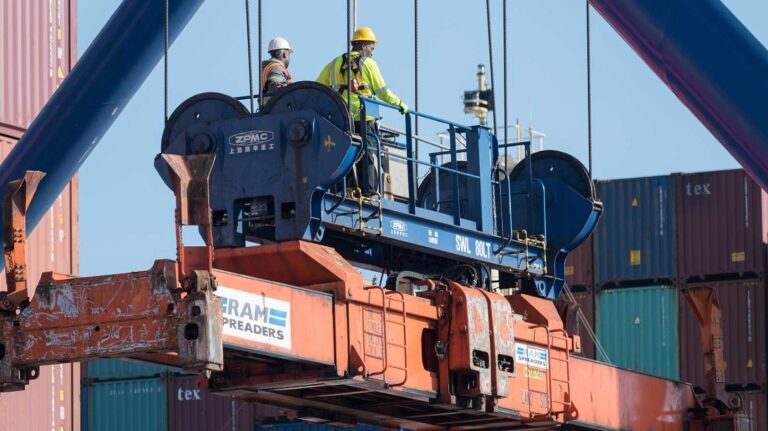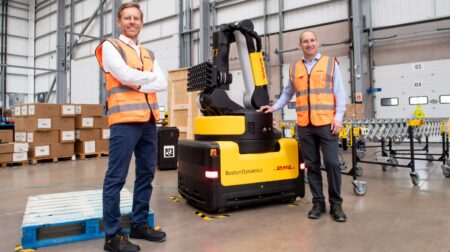Contract negotiations for approximately 45,000 dockworkers on the US East and Gulf Coasts have resumed on Tuesday, as tensions over automation in port operations continue to escalate.
The ongoing labour dispute, which centres on the impact of automation on jobs, has the potential to reshape the future of US port operations, particularly in relation to automation technologies such as semi-automated cranes.
The International Longshoremen’s Association (ILA) is seeking to reverse past concessions on automation, specifically targeting the use of rail-mounted gantry cranes, which the union argues threaten job security for workers.
READ MORE: AutoStore system launched in South Korea’s first automated smart hub
The cranes, which automate the stacking of containers on docks, are seen by the union as a step towards further mechanisation that could displace workers in key terminal operations.
In contrast, the United States Maritime Alliance (USMX), which represents port employers, maintains that automation is essential for maintaining the competitiveness of US ports, particularly as global rivals like Chinese ports continue to invest heavily in automation technologies.
The USMX argues that these advancements will not only increase efficiency but also preserve and potentially create new jobs by ensuring US ports can handle growing cargo volumes more effectively.
The two sides face a 15 January deadline to reach an agreement. If a deal is not struck, dockworkers at several major container ports—including those handling more than half of US ocean imports—could potentially strike just days before the inauguration of President-elect Donald Trump on 20 January.
A similar strike by the ILA last October caused significant disruptions, leading to shipping price spikes and extensive cargo backlogs across 36 affected ports.
Historically, the ILA had agreed to the use of semi-automated cranes, under the impression that they would increase productivity without significantly reducing jobs. These cranes, which were first implemented at Norfolk International Terminals nearly two decades ago, replace older, human-operated forklifts and can stack containers more efficiently.
However, the union now argues that the widespread adoption of such technology could lead to widespread job reductions across other US ports, as automation continues to expand.
The automation debate also touches on broader concerns about port efficiency. While automated systems have been successful in certain contexts, such as ports in China, experts caution that US ports may face challenges in implementing large-scale automation.
The dynamic nature of US cargo flows, with fluctuations in volume, may make it more difficult to justify the substantial costs of fully automated systems. Additionally, some studies have suggested that automation might not necessarily lead to higher productivity when compared to conventional manual operations.
The ongoing negotiations come after a three-day strike last October that resulted in a 62% wage increase for ILA members over six years, though this agreement was contingent on resolving outstanding issues, including those related to automation. Despite the contentious nature of the discussions, both sides have expressed a shared interest in improving port efficiency while preserving the stability of the workforce.
 Join more than 11,000 industry leaders at Robotics and Automation Exhibition on 25-26 March 2025. Explore cutting edge technologies, connect with peers and discover the latest innovations shaping the future of manufacturing, engineering and logistics. Register now to secure your place at this premier event!
Join more than 11,000 industry leaders at Robotics and Automation Exhibition on 25-26 March 2025. Explore cutting edge technologies, connect with peers and discover the latest innovations shaping the future of manufacturing, engineering and logistics. Register now to secure your place at this premier event!








